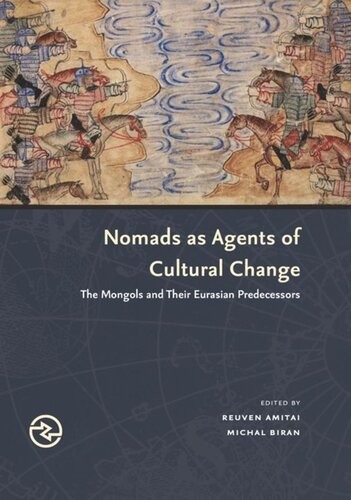

Most ebook files are in PDF format, so you can easily read them using various software such as Foxit Reader or directly on the Google Chrome browser.
Some ebook files are released by publishers in other formats such as .awz, .mobi, .epub, .fb2, etc. You may need to install specific software to read these formats on mobile/PC, such as Calibre.
Please read the tutorial at this link: https://ebookbell.com/faq
We offer FREE conversion to the popular formats you request; however, this may take some time. Therefore, right after payment, please email us, and we will try to provide the service as quickly as possible.
For some exceptional file formats or broken links (if any), please refrain from opening any disputes. Instead, email us first, and we will try to assist within a maximum of 6 hours.
EbookBell Team

5.0
58 reviewsSince the first millennium BCE, nomads of the Eurasian steppe have played a key role in world history and the development of adjacent sedentary regions, especially China, India, the Middle East, and Eastern and Central Europe. Although their more settled neighbors often saw them as an ongoing threat and imminent danger—“barbarians,” in fact—their impact on sedentary cultures was far more complex than the raiding, pillaging, and devastation with which they have long been associated in the popular imagination. The nomads were also facilitators and catalysts of social, demographic, economic, and cultural change, and nomadic culture had a significant influence on that of sedentary Eurasian civilizations, especially in cases when the nomads conquered and ruled over them. Not simply passive conveyors of ideas, beliefs, technologies, and physical artifacts, nomads were frequently active contributors to the process of cultural exchange and change. Their active choices and initiatives helped set the cultural and intellectual agenda of the lands they ruled and beyond.
This volume brings together a distinguished group of scholars from different disciplines and cultural specializations to explore how nomads played the role of “agents of cultural change.” The beginning chapters examine this phenomenon in both east and west Asia in ancient and early medieval times, while the bulk of the book is devoted to the far flung Mongol empire of the thirteenth and fourteenth centuries. This comparative approach, encompassing both a lengthy time span and a vast region, enables a clearer understanding of the key role that Eurasian pastoral nomads played in the history of the Old World. It conveys a sense of the complex and engaging cultural dynamic that existed between nomads and their agricultural and urban neighbors, and highlights the non-military impact of nomadic culture on Eurasian history.
Nomads As Agents of Cultural Change illuminates and complicates nomadic roles as active promoters of cultural exchange within a vast and varied region. It makes available important original scholarship on the new turn in the study of the Mongol empire and on relations between the nomadic and sedentary worlds.